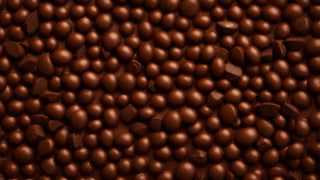Understanding Chocolate Bloom: Causes and Prevention
Chocolate is a beloved treat enjoyed by people all over the world. But have you ever noticed a white, powdery substance on the surface of your chocolate? This phenomenon is known as chocolate bloom, and it can affect the appearance and texture of your favorite sweet treat. In this article, we will explore the causes of chocolate bloom and provide some tips on how to prevent it.
What is Chocolate Bloom?
Chocolate bloom refers to the discoloration and texture changes that occur on the surface of chocolate. There are two types of chocolate bloom: fat bloom and sugar bloom.
Fat Bloom
Fat bloom occurs when the cocoa butter in chocolate rises to the surface and solidifies. It gives the chocolate a dull, whitish appearance and a grainy texture. This type of bloom is caused by improper chocolate tempering or storage at incorrect temperatures.
Sugar Bloom
Sugar bloom happens when moisture comes in contact with the sugar crystals on the surface of the chocolate. The moisture dissolves the sugar, which then recrystallizes when it evaporates, leaving a white, powdery residue. Sugar bloom is often caused by storing chocolate in a humid environment.
Preventing Chocolate Bloom
While chocolate bloom doesn't affect the taste of the chocolate, it can be undesirable for aesthetic reasons. Here are some tips to prevent chocolate bloom:
- Store chocolate in a cool, dry place with a temperature between 15-18°C (59-64°F). Avoid exposing chocolate to direct sunlight or extreme temperature fluctuations.
- Keep chocolate away from strong-smelling foods, as chocolate can absorb odors.
- Wrap chocolate tightly to minimize exposure to air and moisture.
- If you live in a humid climate, consider storing chocolate in an airtight container with a desiccant packet to absorb excess moisture.
- Properly temper chocolate when melting and cooling to prevent fat bloom.
By following these preventive measures, you can keep your chocolate looking and tasting its best.
In Conclusion
Chocolate bloom may be an unwelcome sight, but with proper storage and handling techniques, you can minimize its occurrence. Whether it's fat bloom or sugar bloom, understanding the causes and taking preventive measures will help you enjoy your chocolate without any unsightly surprises. So go ahead, indulge in your favorite chocolate treats and savor every delicious bite!


